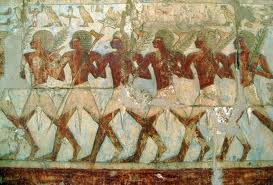After the last ruler of the 11th dynasty, Mentuhotep IV, was assassinated, the throne passed to his vizier, or chief minister, who became King Amenemhet I, founder of dynasty 12. A new capital was established at It-towy, south of Memphis, while Thebes remained a great religious center. During the Middle Kingdom, Egypt once again flourished, as it had during the Old Kingdom. The 12th dynasty kings ensured the smooth succession of their line by making each successor co-regent, a custom that began with Amenemhet I.
Middle-Kingdom Egypt pursued an aggressive foreign policy, colonizing Nubia (with its rich supply of gold, ebony, ivory and other resources) and repelling the Bedouins who had infiltrated Egypt during the First Intermediate Period. The kingdom also built diplomatic and trade relations with Syria, Palestine and other countries; undertook building projects including military fortresses and mining quarries; and returned to pyramid-building in the tradition of the Old Kingdom. The Middle Kingdom reached its peak under Amenemhet III (1842-1797 B.C.); its decline began under Amenenhet IV (1798-1790 B.C.) and continued under his sister and regent, Queen Sobekneferu (1789-1786 B.C.), who was the first confirmed female ruler of Egypt and the last ruler of the 12th dynasty.









